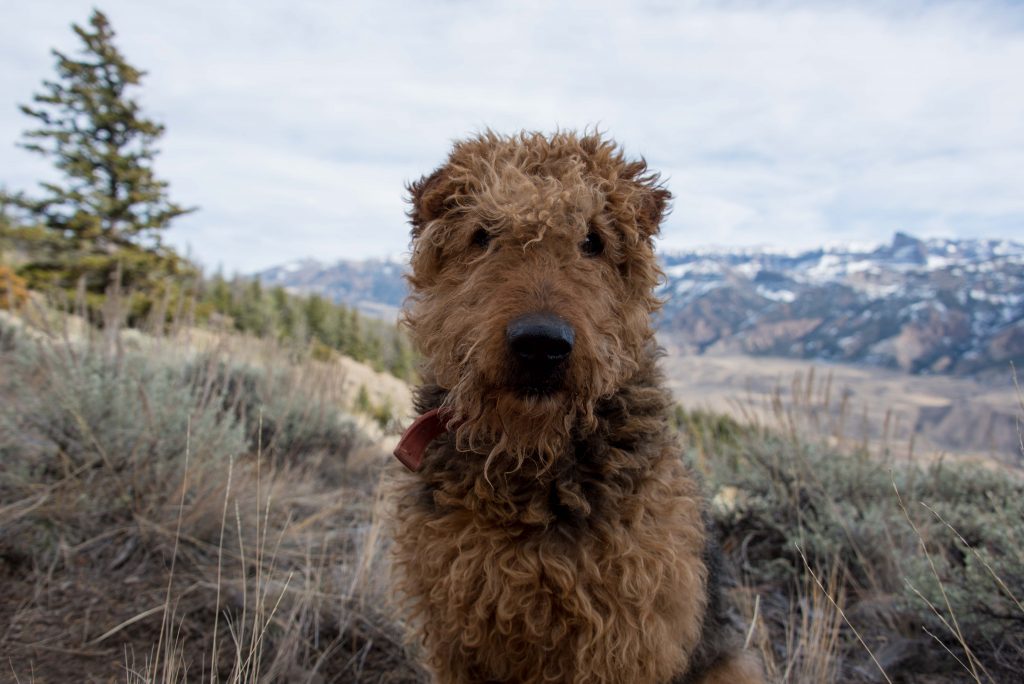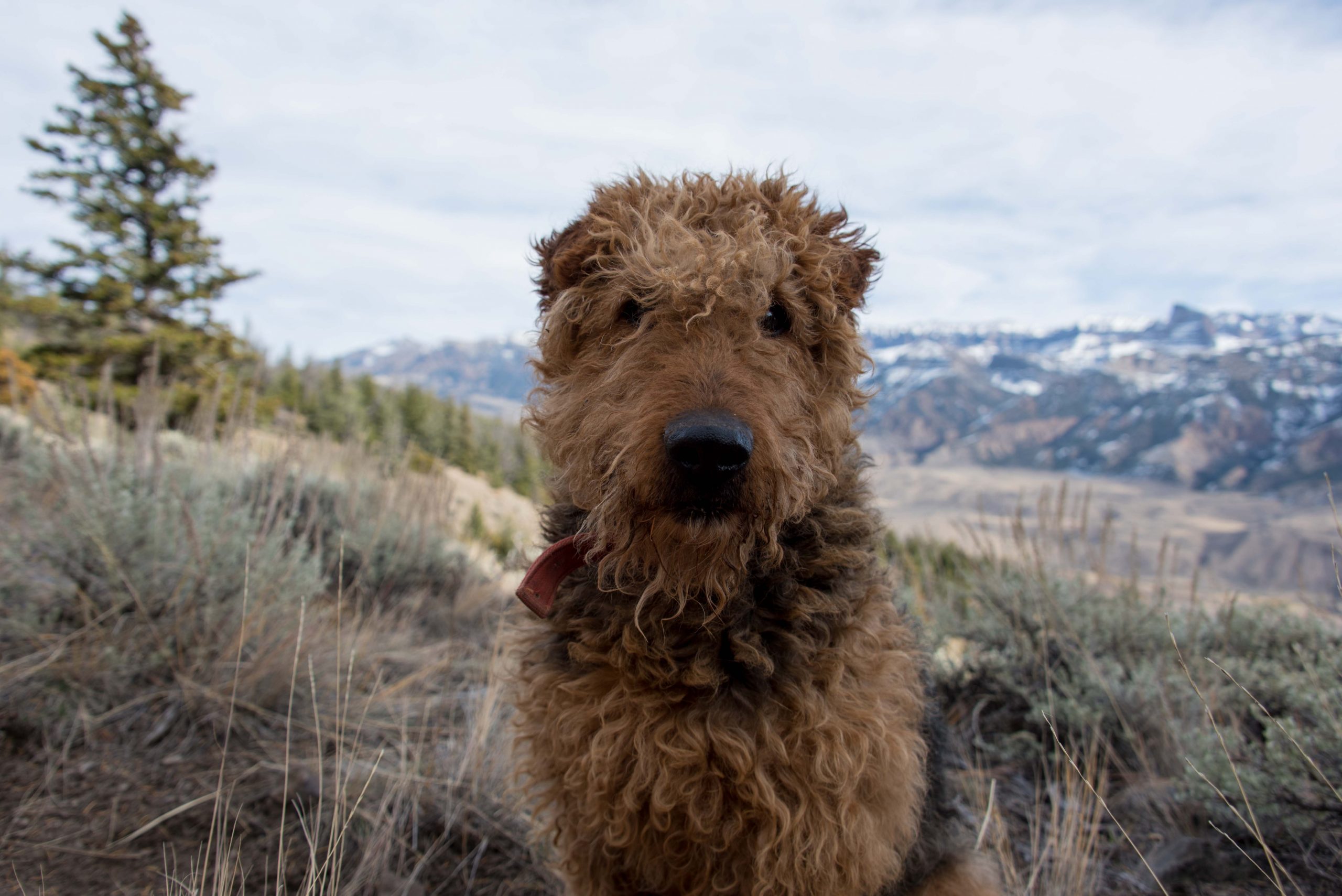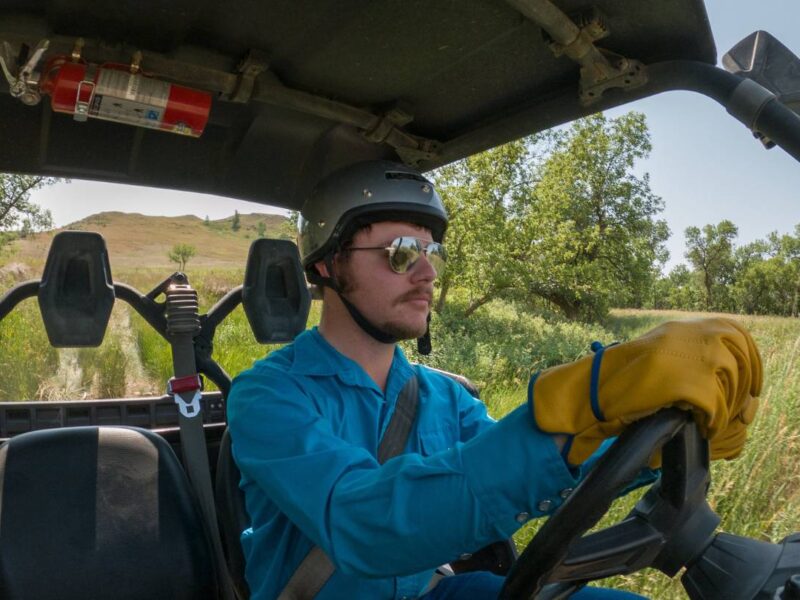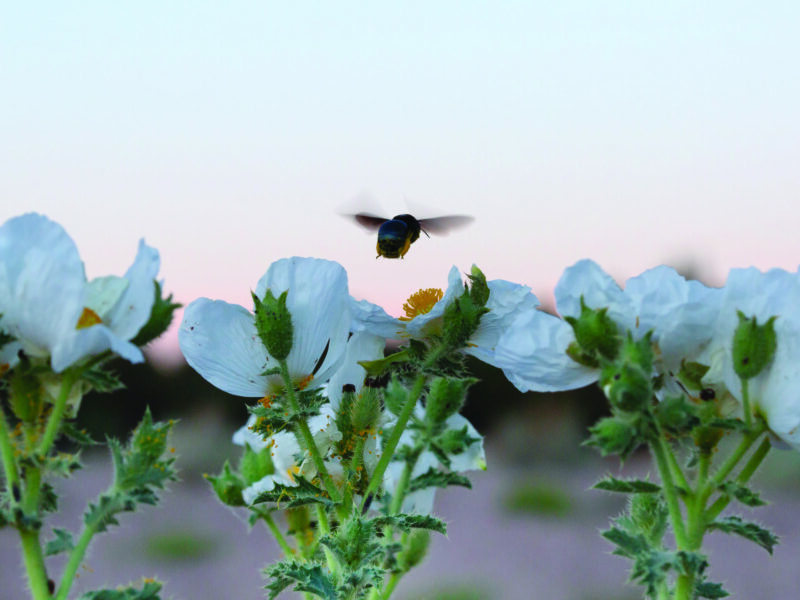Greg Hertel and his airedale terriers
Greg Hertel has used Airedale terriers for several years to protect himself, family and staff from grizzly bears by keeping them away from livestock and buildings around their Cody, Wyoming ranch. The Airedales sound a particular bark when they smell or see a grizzly bear, and are let out of their kennel to run the bears off the ranch. These dogs will only run a mile or so from the ranch and return after about an hour.
Hertel explains, “Airedales are great bear dogs; they seem to naturally know bears are a threat, so there is not much training required. They are better bear protection than bear spray because they do their job no matter how hard or which direction the wind is blowing.”

The Airedales accompany his family and staff while they fish along the river or hike in the mountains. If they smell a bear, they bark and run in the direction the scent is coming from, preventing a human and grizzly bear encounter. Hertel is one of a group of ranchers using herding and rotational grazing techniques to manage grazing and deter livestock predation on public land grazing allotments. They calve in July and August and have had no predation losses in eight years.
By keeping our cattle bunched together, it doesn’t take all day to look them over, like it would if they were spread out. We believe that keeping them bunched up, rather than spread out, lessens the chance of a calf or yearling getting picked off. It is also good grazing management. Given the topography and ground cover, I believe that daily riding and keeping the cattle together is an effective and efficient method to manage grass and predation.
Greg Hertel
“Someone is riding our herd every day, moving them out of areas that have already been grazed and into ungrazed areas. We look for health issues with the animals, primarily lameness and pinkeye, and look for grizzly bear or wolf tracks,” explains Hertel.
He also relates, “One time, after seeing a lot of wolf signs and being told that other riders had seen wolves, Karen and I camped up by the cattle and shot cracker shells from a shotgun all night. We did not see any more wolf signs for the rest of the fall grazing.” Hertel maintains that frequent herding is both a predator-deterring and a labor-saving practice.





